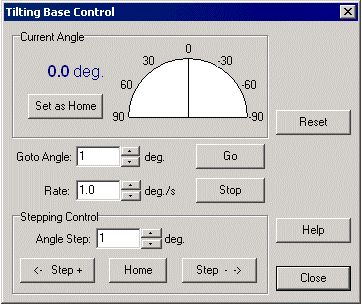|
March 2022 |
| Developments in Nature Inspired Surface Engineering |
|
Any good student of
superhydrophobicity knows that the gold standard of superhydrophobic
surfaces is the lotus leaf. There are many other hierarchal surfaces
found in nature (legs, leaves, skin, and eyes, for example) that
feature amazing self-cleaning, anti-reflective, antifogging, and
water-repelling properties. Meanwhile researchers continue to look
for novel ways to emulate these natural non-wetting surfaces. This
month we will examine five new developments in nature-inspired
surfaces.
Anti-Reflective Surfaces - Researchers in Greece are developing anti-reflective (AR) transparent surfaces using a method that is environmentally friendly (i.e., no toxic chemicals are required) and low-cost.1 These biomimetic surfaces feature laser-textured nanoscopic pillars that emulate the surface of cicada wings. The reduction of light glare is essential to optical and photonic applications. SLIPS - Slippery liquid infused porous surfaces (SLIPS) are designed to emulate the slippery surface of the pitcher plant. By infusing a porous surface with water and other liquids, the surface can become extremely repellent, self-cleaning and anti-fouling.2 SLIPS can be made on a variety of materials - metal, plastic, glass, even textiles - and is self-healing. And, unlike lotus-inspired surfaces, SLIPS also repel oil and not suffer from performance degradation like nano-patterned surfaces. Liquid Marbles - The aphid, a small sap-sucking insect, secretes a honeydew liquid that is coated in a powdery wax. These droplets form liquid marbles which are defined as drops of liquid that are covered in some type of hydrophobic particles.3 Consequently, they have properties of both a liquid (e.g., elasticity) and a solid (they do not coalesce). Based on their peculiar and unique behavior, it's suggested that liquid marbles might play an important role in microfluidic applications. Icephobic Surfaces - Moth eyes are tuned for night vision thanks to corneal lenses that are covered with tiny nanopillars that reduce light reflection. Researchers in Vietnam have developed a transparent surface that is modeled after the moth eye.4 Airplane bodies, wind turbines, cars, and power lines could benefit from this technology. This physiochemical method is less taxing than the traditional mechanical scraping and heating. Bio-inspired Armor - Researchers at Imperial College London have proposed a Carbon Fiber Reinforced Polymer (CFRP) modeled after fish scales.5 The goal is to remain flexible while preventing penetration. Successful prototypes show that body armor designs modeled after composite fish scale assemblies can provide superior strength while avoiding rigidity. There are numerous other nature-inspired surfaces, methods, and designs and surely many more will come to light in the years ahead. Novel technologies are inviting precision production of bio-inspired surfaces. Features such as self-healing, recyclability, eco-friendliness, and sustainability are added benefits to many of these nanomaterials. Notes 1 More details
here. |
| Automated Tilting Base Tips and Tricks |
|
The ramé-hart
Automated Tilting Base is
our second most popular accessory (after the Automated Dispensing
System). We refine the tilting plate method with this stepper
motor-driven software-controlled device which measures contact angle
hysteresis, roll-off angle, and advancing and receding contact angles.
This month we will address the most common tips and tricks for smoothly operating the Automated Tilting Base. Tip 1: Before operating the device, ensure that the red mushroom-shaped kill switch is in the UP position. Do this by turning the switch CW. If it pops up or is already in the UP position, you're good to go. Tip 2: Ensure that the hardware and software are in sync. First, make sure that the angle reading on mechanical protractor at the end of the Tilting Base reads 0°. Then open the Tilting Base Control (as shown in the image below) under Device Control and if the Current Angle is not also set to 0.0°, click on the Set as Home button to synchronize the software with the hardware.
Tip 3: For best results, embed the tilt instructions in a methods-based experiment (as opposed to using the Tilting Base Control). For advancing and receding contact angle, see this video for an example. Tip 4: Drop size matter. For non-tilt contact angle measurements, drop volume is not that critical. However, with tilting measurements, drop volume affects the roll-off angle. The greater the volume, the less tilt it takes for it to roll off. Thus, when working with multiple surfaces, be sure to use the same drop volume to get apple-to-apple comparisons. Tip 5: When measuring advancing and receding contact angles, be aware that different methods yield different results. For example, the add/remove volume method should produce an advancing contact angle similar to that measured by the tilting base method. However, for the receding contact angle, the presence of the needle while doing the remove volume method produces a less reliable measurement than the receding contact angle using the tilting plate method. Please
contact
us if you have any questions regarding the Automated Tilting Base. We would be happy to answer any question. |
| Second International Conference on Nature Inspired Surface Engineering |
| The Second International Conference on Nature Inspired Surface Engineering (NISE 2022) will be held in hybrid format (in-person and virtual) at the Seoul National University, South Korea on August 17-19, 2022. This NISE conference will provide a means of reporting and sharing the latest developments in the nature-inspired surface engineering which encompasses physics, chemistry, biology, material science, and a variety of engineering disciplines. Confirmed keynote speakers include Prof. Teri Odom at the Department of Chemistry, Northwestern University, USA (also currently editor-in-chief of the ACS journal, Nano Letters), Prof. Piotr Jablonski at the Seoul National University, and Dr. Hans-Jürgen Butt (currently director) at the Max Planck Institute for Polymer Research, Germany. You can find more details about the conference here. If you have any questions regarding the conference, please feel free to contact Prof. Chang-Hwan Choi (Conference Chair) at cchoi@stevens.edu. |
|
Regards,
Carl Clegg |

